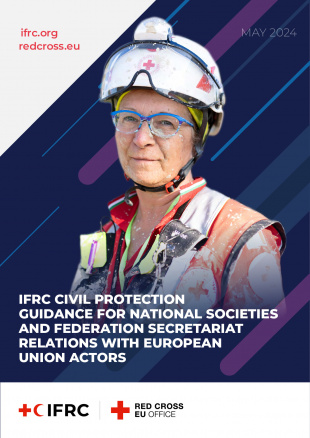Civil Protection Guidance for National Societies and IFRC relations with EU actors
The complexity of emergency response operations has escalated alongside the development of increasingly sophisticated national and international infrastructures. In October 2001, the European Commission established the Union Civil Protection Mechanism (UCPM). Since its inception, the UCPM has significantly expanded. Events such as the COVID-19 pandemic (2020), the armed conflict between Russia and Ukraine (2022), or the widespread forest fires across multiple European countries (2023) have led to a marked increase in UCPM activations both within and outside the EU.
The existing coordination system in the EU offers a wide array of opportunities, potentially strengthening cooperation within the International Red Cross and Red Crescent Movement. However, numerous challenges also arise due to the state-based nature of the UCPM, which inherently risks compromising its independence and neutrality.
In this context, National Societies and the IFRC Secretariat must necessarily position themselves and adeptly navigate the opportunities and risks presented by these developments. This has to be done in light of the mission and rules established by the Statutes of the International Red Cross and Red Crescent Movement, and in line with the relevant content of the Resolutions adopted by the International Conference of the Red Cross and Red Crescent, as well as with the Movement’s relevant policies.
The IFRC Civil Protection Guidance for National Societies and Federation Secretariat relations with European Union actors (2024) aims to lay down practical guidance on principled and constructive engagement with the UCPM and national civil protection stakeholders. This guidance is relevant to Red Cross and Red Crescent entities in the light of the amendments from the years 2019–2021 pertaining to Decision No 1313/2013/EU of the European Parliament and the Council and regulating the Mechanism’s development. It constitutes the revised edition of an earlier version from 2013.
Theme


